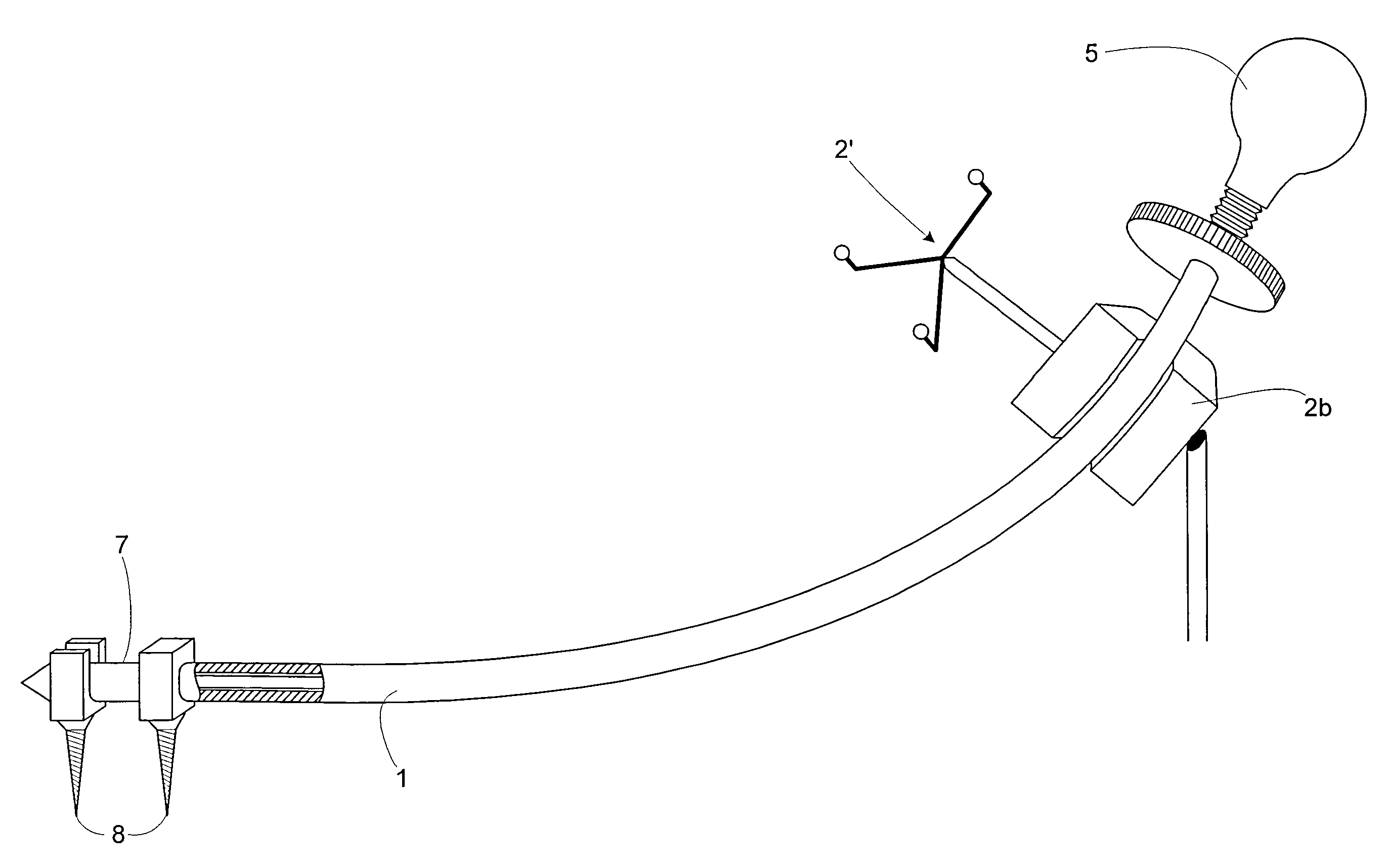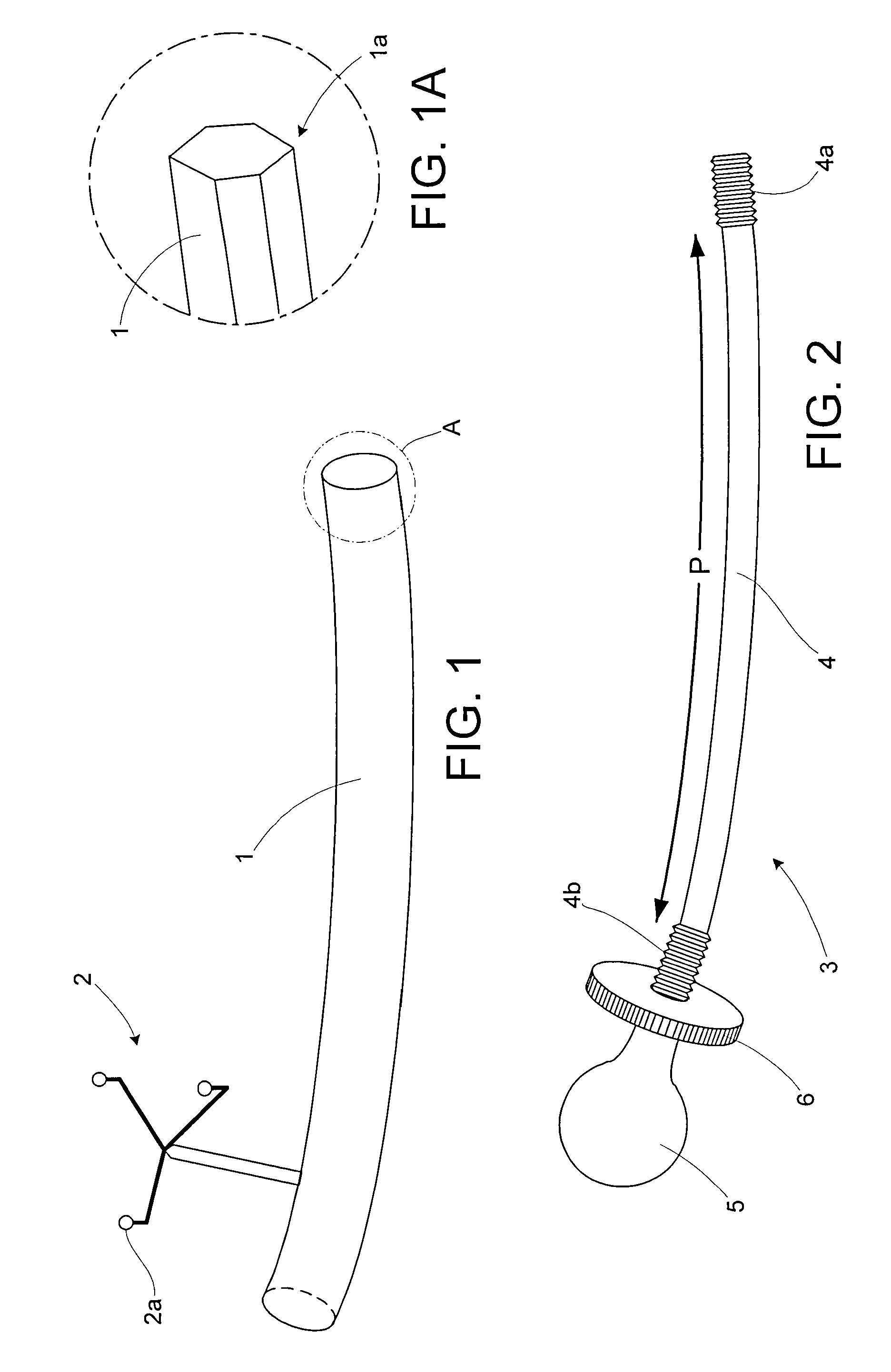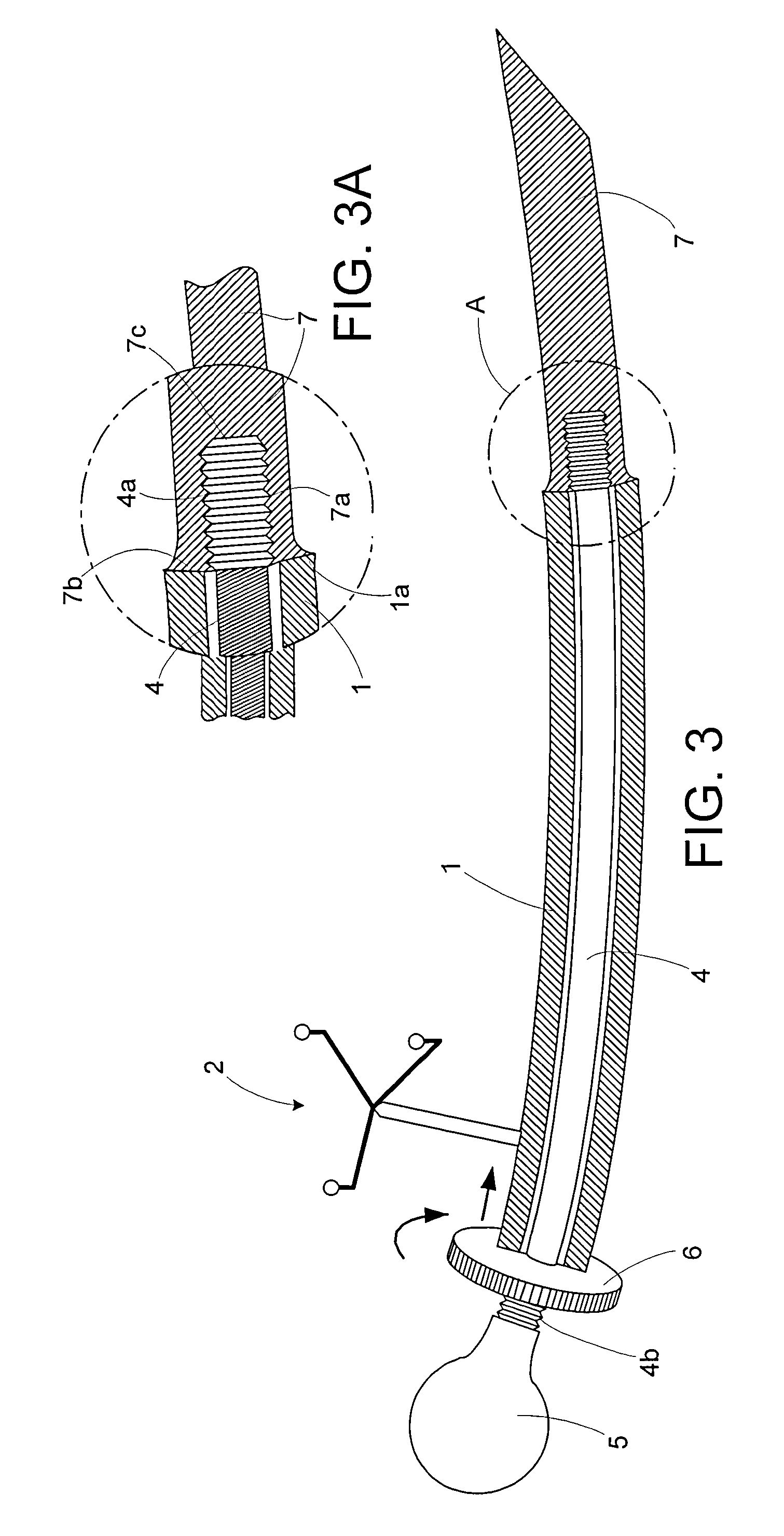Device and method for calibrating an element and device and system for positioning an element
a technology of element and device, applied in the field of devices and methods for calibrating elements and devices and systems for positioning elements, can solve problems such as scars, increased risk of infection or complications,
- Summary
- Abstract
- Description
- Claims
- Application Information
AI Technical Summary
Benefits of technology
Problems solved by technology
Method used
Image
Examples
Embodiment Construction
[0043]FIG. 1 shows a tubular guiding sleeve 1, which is connected to a reference star 2 (also referred to as a navigation star) including three passive markers 2a. The guiding sleeve 1 is open at its rear end, (shown on the left in FIG. 1), and at its front end, (shown on the right in FIG. 1). FIG. 1A shows a cross-section of the part of the guiding sleeve 1 indicated by A in FIG. 1, in an enlarged representation. As shown in FIG. 1A, the guiding sleeve 1 includes a rim area 1a which runs broadly conically, onto which an implant 7 can be placed, as shown in FIG. 3.
[0044]FIG. 2 shows a holding element 3. The holding element 3 can include an elastic or otherwise flexible section 4 (shown by the arrows P). The section 4 can, for example, be a flexible metal or plastic element having an outer thread 4a in its front end, (shown on the right in FIG. 2). The rear end of the flexible section or area 4, (shown on the left in FIG. 2), likewise can include an outer thread 4b, onto which a nut ...
PUM
 Login to View More
Login to View More Abstract
Description
Claims
Application Information
 Login to View More
Login to View More - R&D
- Intellectual Property
- Life Sciences
- Materials
- Tech Scout
- Unparalleled Data Quality
- Higher Quality Content
- 60% Fewer Hallucinations
Browse by: Latest US Patents, China's latest patents, Technical Efficacy Thesaurus, Application Domain, Technology Topic, Popular Technical Reports.
© 2025 PatSnap. All rights reserved.Legal|Privacy policy|Modern Slavery Act Transparency Statement|Sitemap|About US| Contact US: help@patsnap.com



